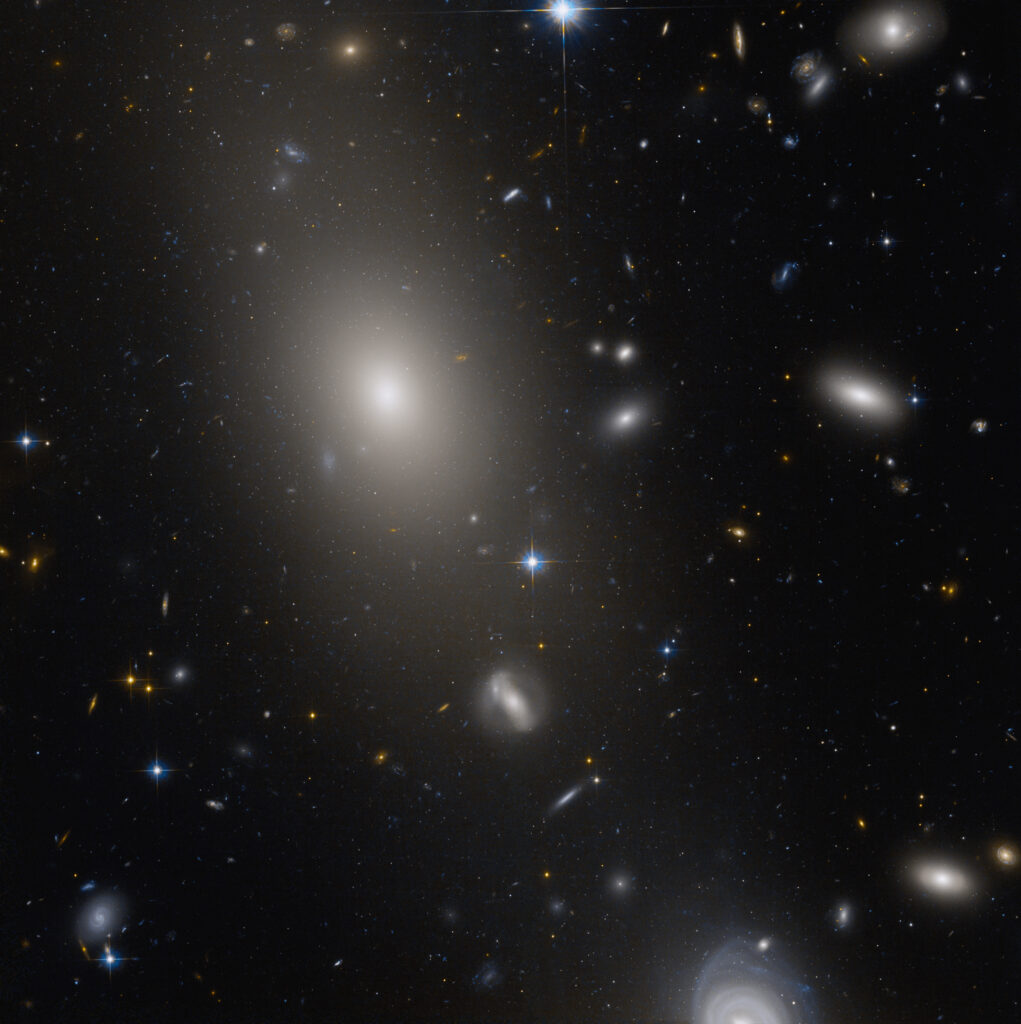This new Hubble telescope image captures the galactic cluster Abell 2147. It is located at a distance of half a billion light-years from the Milky Way in the constellation of the Serpens.

The Hubble image is dominated by a bright object located in its upper left part. This is the largest participant of Abell 2147 — galaxy UGC 10143. An extensive halo, a bright center and the absence of any traces of spiral arms or dark dust bands unmistakably give it an elliptical galaxy.
Elliptical galaxies are quite noticeably different from lenticular and spiral galaxies. Unlike them, they have a spherical or ellipsoid shape, not a disc-shaped one. Another important difference is the absence of star formation processes. Most elliptical galaxies have completely exhausted all reserves of dust and gas, forever losing the ability to form new stars. So mostly they are populated by old stars.
According to astronomers, elliptical galaxies are formed as a result of galactic collisions. This is indicated by the fact that they are quite often located in the centers of clusters.
Recall that Hubble recently photographed a hidden galaxy.
According to https://www.nasa.gov
Follow us on Twitter to get the most interesting space news in time
https://twitter.com/ust_magazine

